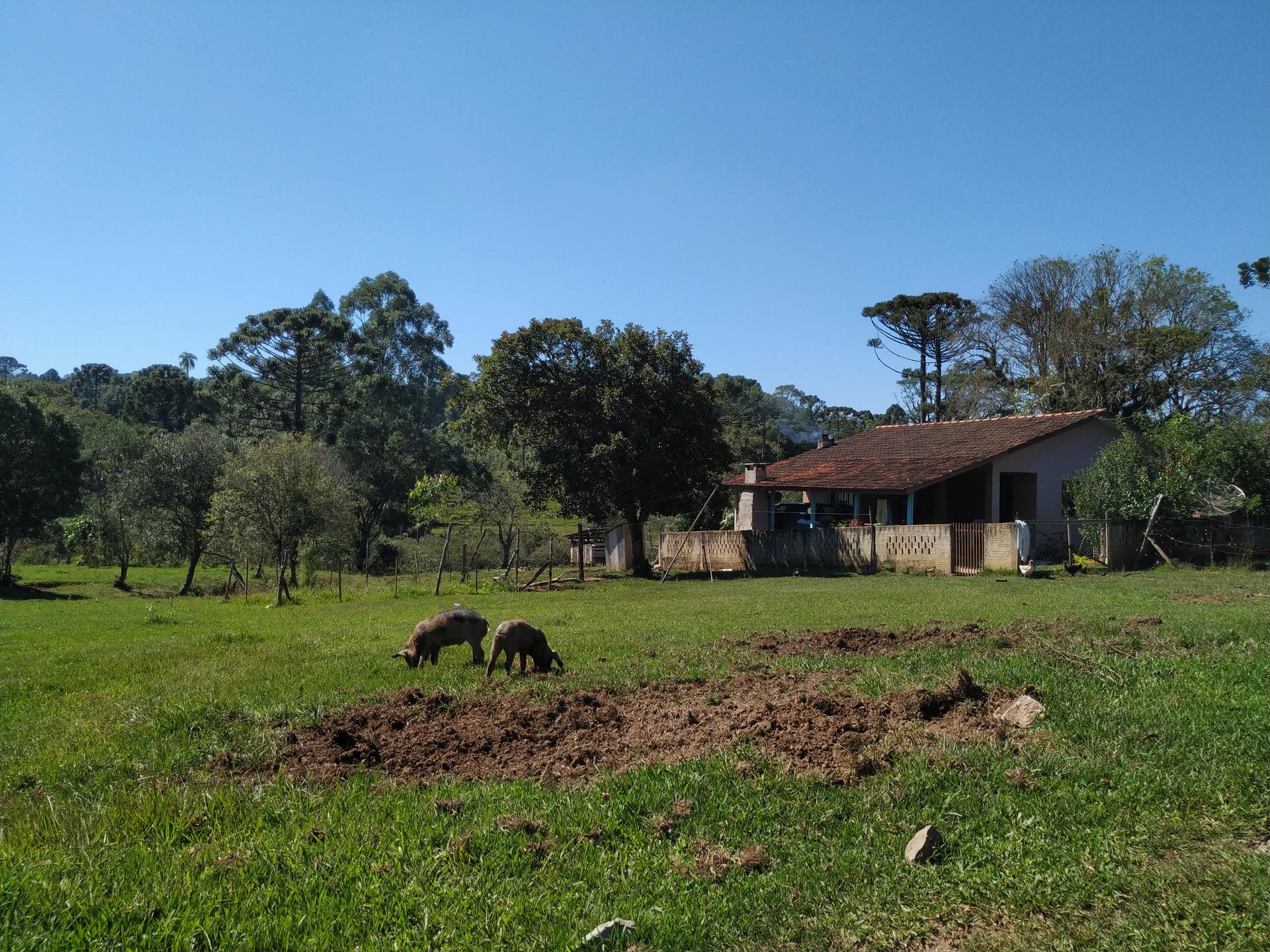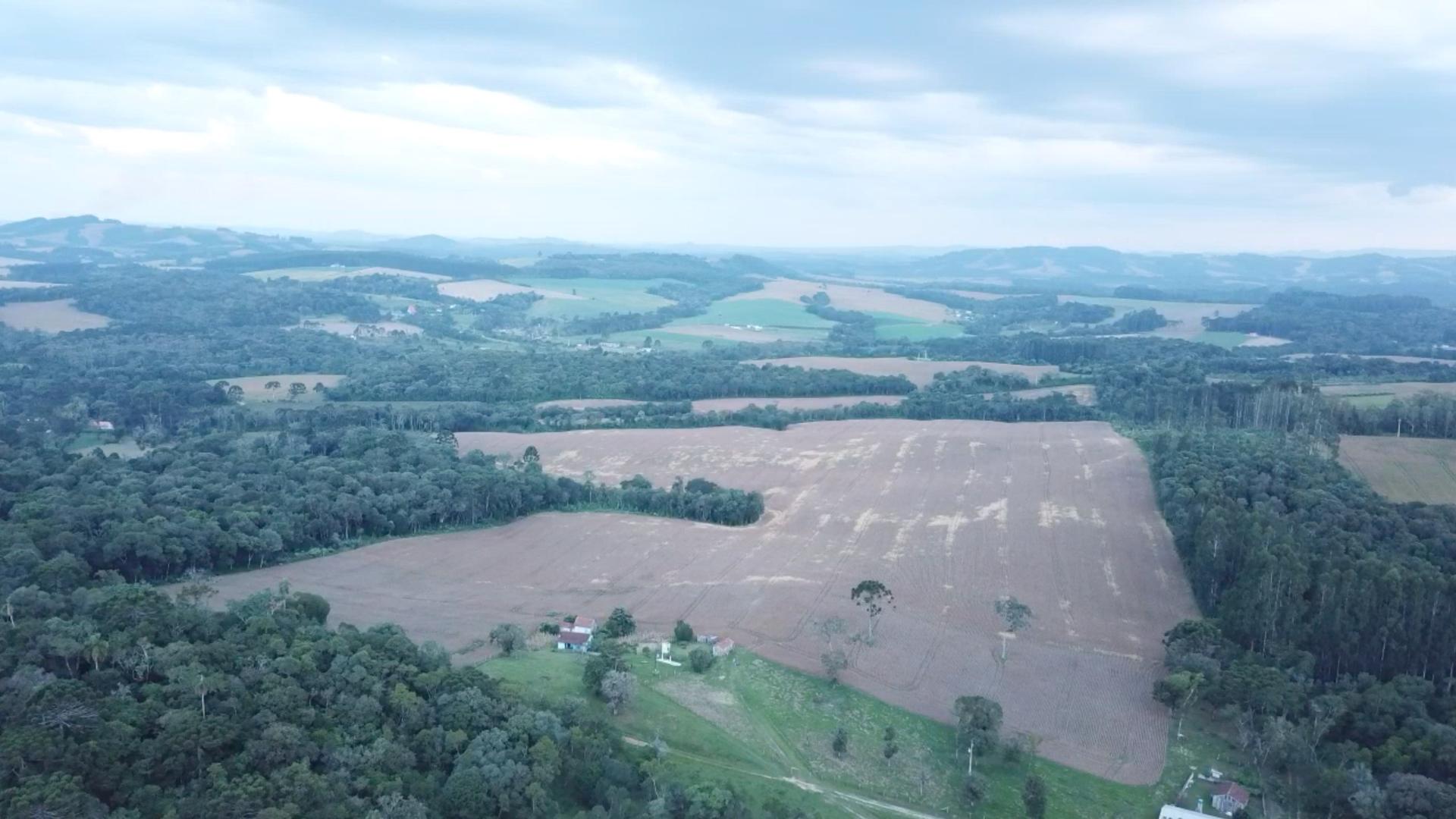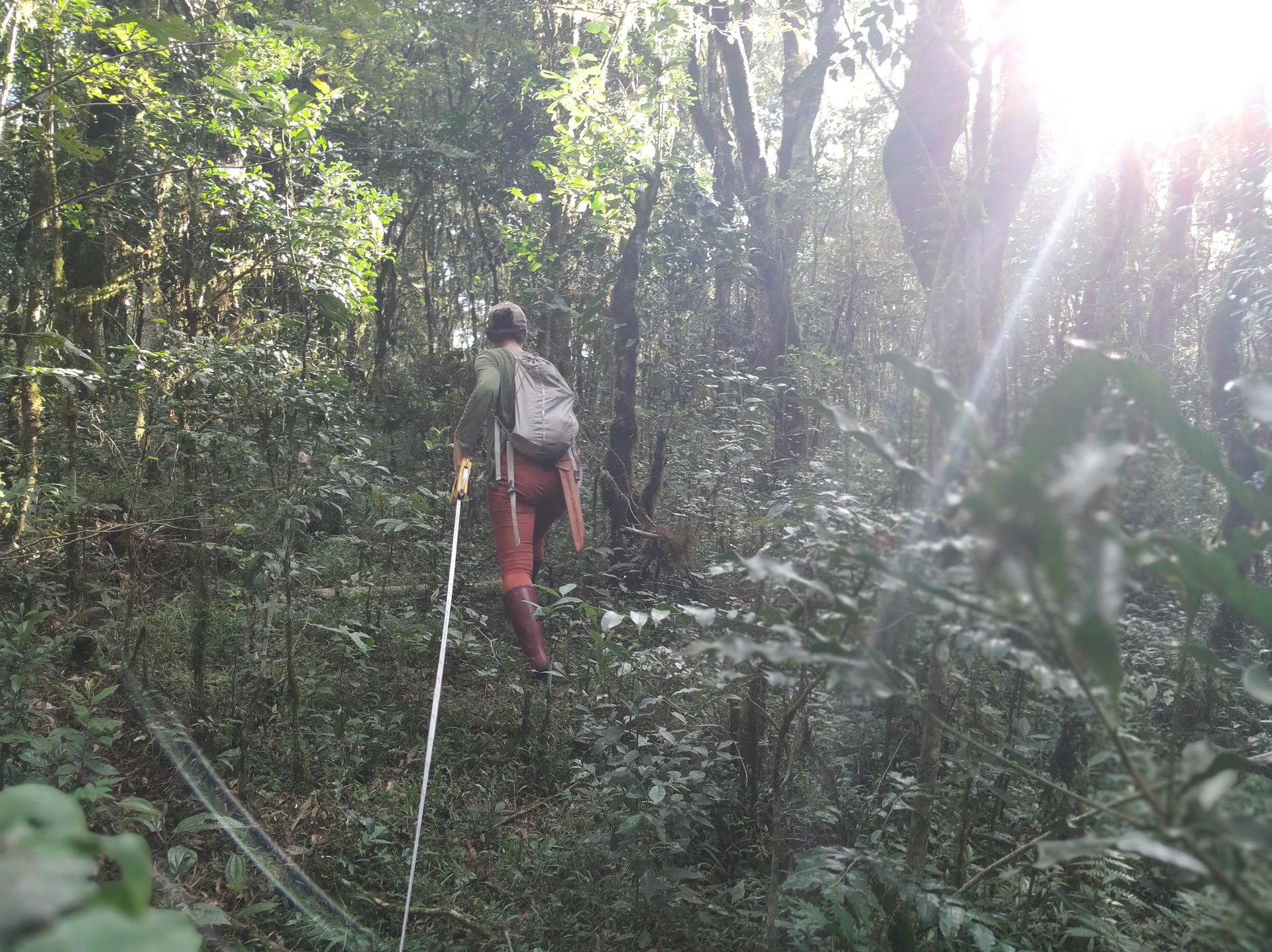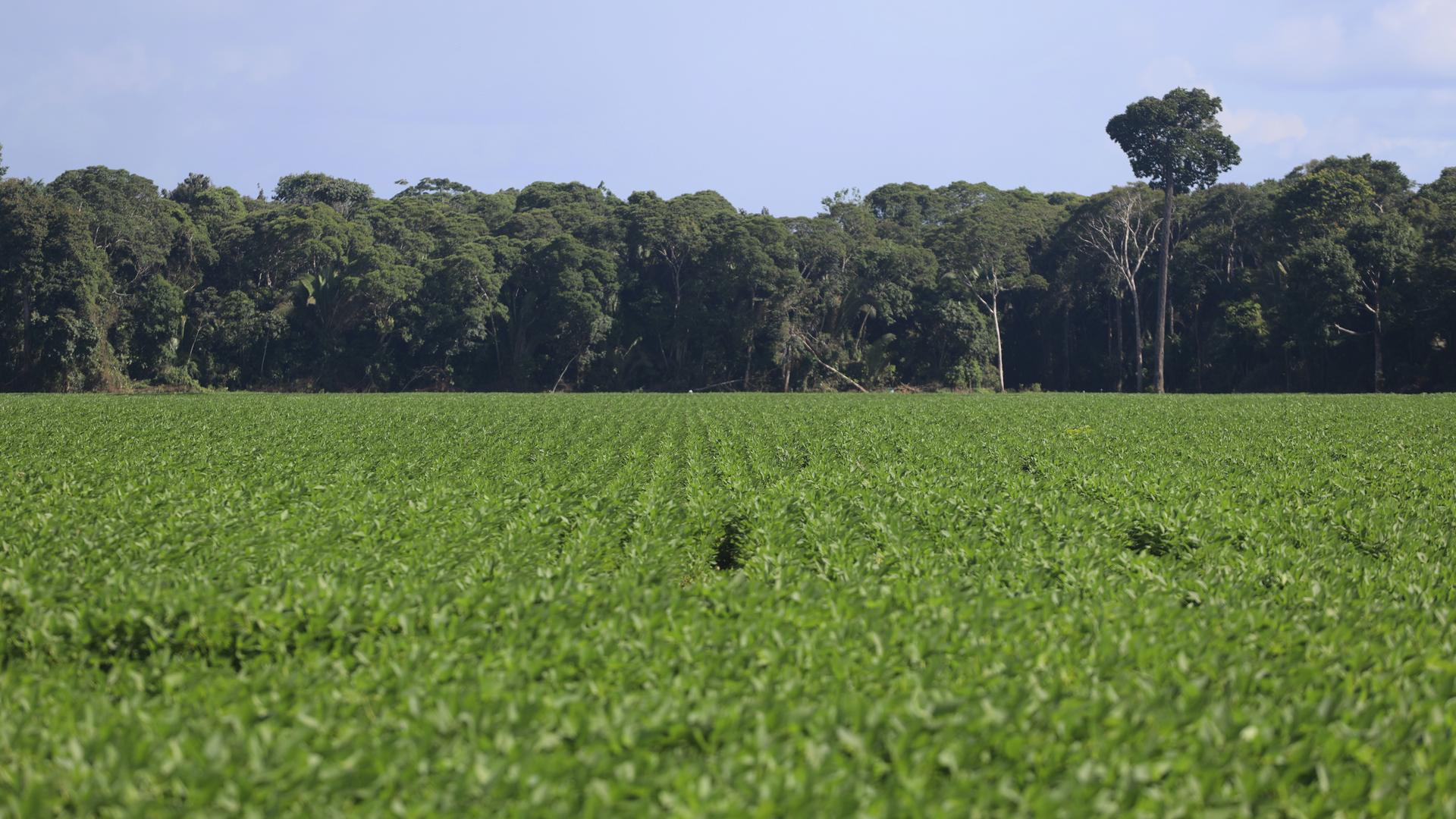Tarcísio Maistricz talks softly on the front porch of his wooden cabin, his wife beside him.
He’s a young leader of a traditional community known as Marcondes in the countryside of the Brazilian state of Paraná. Most of the families in Marcondes have been here since their ancestors emigrated from Ukraine a century ago.
Related: ‘We will not leave Brasilia defeated’: Brazilian Indigenous groups mobilize to defend land rights
But there’s a problem. Soy, he says, is breaking apart their faxinal, or traditional farming community, in Paraná.
“Our greatest threat today is the invasion of the monoculture of soy. People don’t see our land as a territory and are instead privatizing the areas that were collective and negotiating to put in soy. It’s ending our way of life.”
“Our greatest threat today is the invasion of the monoculture of soy,” Maistricz said. “People don’t see our land as a territory and are instead privatizing the areas that were collective and negotiating to put in soy. It’s ending our way of life.”
Maistricz says the size of their communal land has shrunk to a sixth of what it once was. That’s in part because of the huge growth in soy.
Brazil outpaced the United States last year to become the largest soy-producing country in the world. Record exports are again expected this year. The country is looking to produce nearly 5 billion bushels.

Décio Teixeira, head of the Soy Producers Association for the branch in the nearby state of Rio Grande do Sul, has been farming soy for five decades.
“Soy has been a huge catalyst for rural development around the country. Brazil has practically been built around soy since the 1970s,” he said.
The bean is grown up and down the country. Since 1990, the total area of land planted with soy in Brazil has more than tripled.
Related: Copa America soccer championship in Brazil draws protest while coronavirus cases rise
More than 70% of the country’s soy exports go to China. Economists say record exports in soy and other commodities, such as meat, poultry, coffee, sugar cane and paper pulp have helped keep Brazil afloat despite the pandemic. Agribusiness in Brazil makes up more than a quarter of the country’s gross domestic product. And soy is the biggest chunk of that.
“Soy is the great engine of growth for Brazil. And every year, production increases by at least 3%,” Teixeira said. “Last year, we planted 94 million acres of land in Brazil with soy. This year, we hope to hit almost 100.”
But that growth has a cost.

Related: ‘Bolsonaro, get out!’: Protesters across Brazil call for president’s ouster
Brazilian researcher Flavia Oliveira, a PhD candidate in environmental studies at the University of California, Santa Cruz, has been studying the health of forests inside Paraná for several years.
Oliveira says the faxinal communities are a fascinating example of sustainable land use because residents have intentionally preserved their forests as a feeding ground for their pigs and other animals.
“So, the pigs are raised free range and they wander around and the pigs need the forest to feed themselves. So, the system has been an ally for forest conservation in the region because the pigs need the forest, so the faxinal needs the forest standing up.”
“So, the pigs are raised free range and they wander around and the pigs need the forest to feed themselves. So, the system has been an ally for forest conservation in the region because the pigs need the forest, so the faxinal needs the forest standing up.”

Residents of the faxinal communities often harvest pinhão nuts or maté, the South American tea, but increasingly through the years, locals have turned to the profitable soy crops.
As faxinal lands are chopped up, deforested and fenced off, it becomes harder and harder for residents to make ends meet.
Soy is not the only thing threatening these communities, though.
Land-grabbers and logging companies have long battled with small farmers over their resources. And there’s the challenge of changing times. Families age. Kids move on. Properties are sold.
Related: ‘Mining kills’: A gold rush in Brazil threatens the Yanomami Indigenous people
Many newcomers are looking for a country home or a quick profit. They plant soy or fence off communal land, blocking farm animals from the forests; this makes it that much harder for those trying to live the way their families have for generations.
“I walked through the property of this one family and there were these beautiful forests, and he told me, ‘I don’t want to cut the forest down,’” Oliveira said. “’I want to do something with this area, but if I don’t have an economic return from whatever I’m doing with this area, you know, I’m going to probably plant soybean.’”
